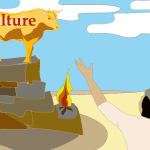Daniel Lewis goes bird watching, and bird watchers need to know their colors. Lewis is also an historian, so he got interested in how color terms came to be standardized.
The work of another bird-watcher was decisive: “Other important color dictionaries were published at the start of the 20th century when [Robert] Ridgway published his work—some of them strange and wonderful. The French Society of Chrysanthemists, for instance, created a two-volume set of swatches and names in 1905 for their own botanical uses. Holly Green was described as ‘the ordinary color of the foliage of the common holly, viewed from 1 to 2 meters away, and without considering reflections.’ And despite the fact that the work was meant for international consumption, its soul remained French. Sky Blue, for example, was described as ‘the color reminiscent of pure sky, in summer (in the climate of Paris).’
“But Ridgway’s work stood out. Shy, retiring, and nerdy in the extreme, he was an astonishingly talented identifier and user of colors. This gift was key in a field where distinguishing among subspecies of birds with slight color variations was essential to understanding the mechanisms of evolution, speciation, and other scientific aspects of the natural world. Ridgway wrote a short color dictionary in 1886, just as he finished work on a groundbreaking set of rules and guidelines for naming birds. He worked quietly on his color project for decades, until 1912, when he self-published a work with 1,115 named colors: Color Standards and Color Nomenclature.”















